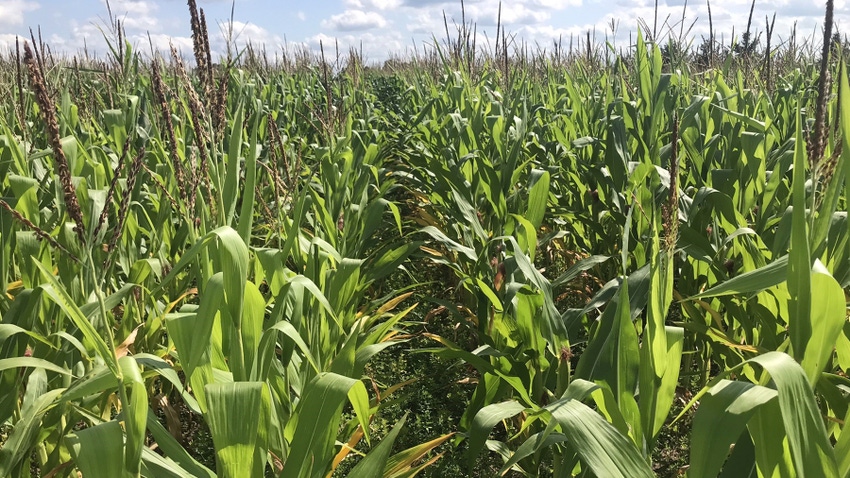January 25, 2024

by Chris Clark
Most Midwestern farms do not have a drought risk management plan. The topic of weather-resilient or extreme-weather crop production practices is in its infancy throughout the Midwest. Why? Wisconsinites are used to it raining weekly, if not more, in the summer and expect an average annual rainfall of 34 inches.
A flash drought occurred in 2023 in Wisconsin as the result of hotter-than-normal temperatures and less-than-normal rainfall. By June and July, all 72 Wisconsin counties fell into a drought category and had drought impacts.
With a dry fall in 2022 and drought sticking around as long as it did in 2023, the effects and water shortfalls will have prolonged impacts into 2024. This extraordinary deficit will take time to reverse. What we need is a winter with average or above-average snowfall that melts slowly in the spring, combined with plentiful spring rains.
But experts say there are equal chances for normal precipitation and dry conditions in 2024. For more on Wisconsin weather, visit the Wisconsin Ag Climate Outlook webpage.
What can you do on the farm now to help manage drought or flooding from extreme weather?
Extreme weather management
Weather preparedness is business-wise. It starts with a plan. Agriculture is facing new challenges related to increased flooding, hotter heat waves, drought, increased wind, and more intense pest and weed pressures.
Wisconsin and the Midwestern states do not typically deal with a lack of rainfall, but the trend for short-term drought is increasing. Drought creates yield and quality issues for crops. Here are management changes that could help during dry conditions:
Increase soil organic matter and soil health. The ability of soil to hold and store water has never been more important for farmers than now, as weather becomes more unpredictable and severe. The ability of soil to capture and retain moisture over a growing season can function like a bank account against which crops can draw between rainfall events or when a drought occurs. While soil textural characteristics are generally fixed for a given field, a soil’s water-holding capacity can be enhanced by management practices.
Terminate covers sooner. When using cover crops, terminate the cover crop earlier in spring if conditions are dry.
Plant seed deeper. Consider adjusting cash crop seed depth at planting based on soil moisture conditions. If it’s dry and no rain is in the extended forecast, you may need to plant deeper.
Increase crop residue. Leaving more crop residue in fields can improve the water-holding capacity of soil and reduce evaporation and erosion. Crop residue also works as a natural snow fence to trap snow and have that moisture eventually melt and stay in the field. During heavy rainfalls, crop residue helps reduce raindrop impact on the soil, minimizing soil loss to surface runoff.
Irrigate. Invest in permanent or temporary irrigation for high-dollar crops. Research all types of irrigation systems that may be appropriate for your farm and the crops you grow, and pick the one that will conserve the most water. Learn more at fyi.extension.wisc.edu.
Plant different varieties. Select drought-tolerant crop varieties.
Consider plant population. Use precision planting to alter plant population density to reduce crop demands for water or nutrients on certain soil types.
More heat
Heat stress happens in Wisconsin and the Midwest when temperatures exceed 90 degrees F. The trend today is for hotter heat waves and warmer nighttime temperatures. There will be more fire danger threats.
Hot temperatures during the reproductive phases of crops reduce yield and quality of fruit or grain. Warmer winters with less snow and ice cover on lakes deplete soil moisture and water levels, and “trick” plants into coming out of dormancy early while late frost or freeze events can still occur.
Increase soil cover with mulch or cover crops to conserve soil moisture and reduce soil temperatures. For more information on the difference in temperature based on management practices, visit the USDA Climate Hubs webpage.
Pest issues
Warmer weather and stressed plants open opportunities for pests such as weeds, insects and diseases. The likelihood of a cold winter preventing overwintering will be minimized, and spring will see higher pest populations. Areas that never saw a certain pest most likely will see it for the first time and be unsure how to manage it.
The longer growing season will mean increased generations of pest cycles per season to control. Increase Integrated Pest Management techniques. Focus on scouting, regional monitoring and training for planned response for chemical-resistant or detrimental diseases in new areas. Check out the DATCP Home Pest Survey.
Farmers can prepare for extreme weather, drought, heat and pests with the right management strategies. Extreme weather effects vary by location, soil type and crop.
Clark is a certified crop adviser and a northeast regional University of Wisconsin Extension outreach specialist.
You May Also Like




